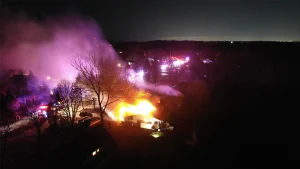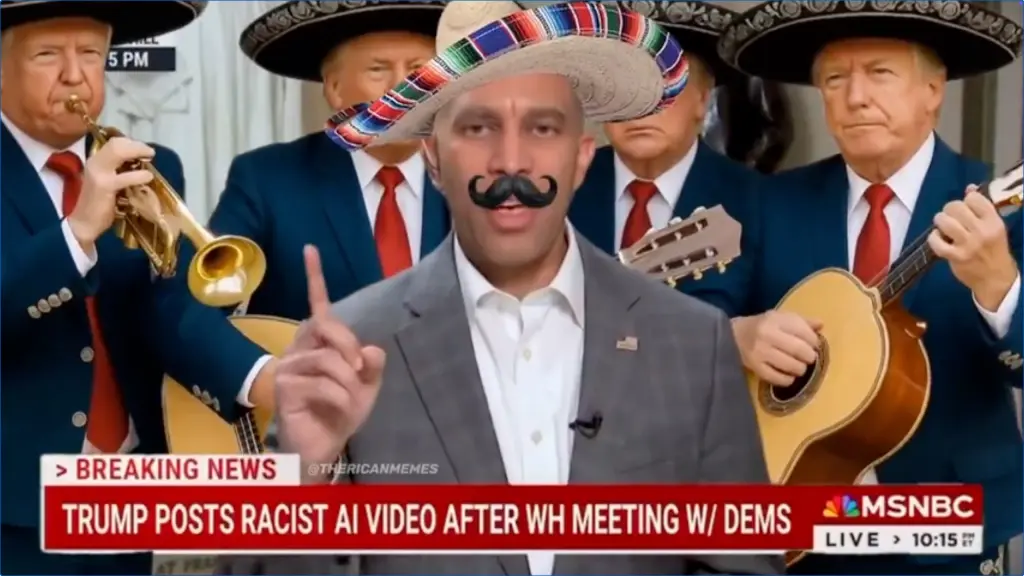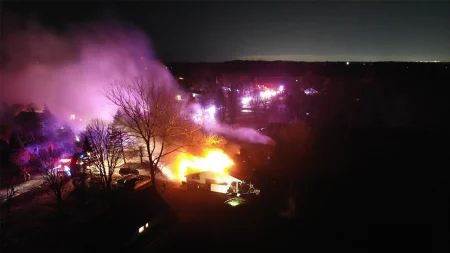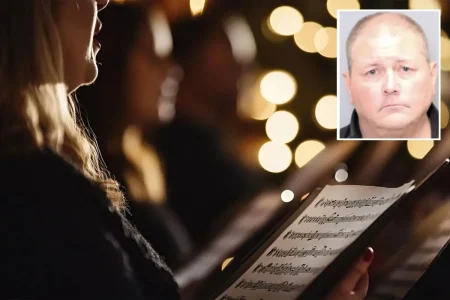Trump’s Meme War Amid Government Shutdown: A New Era of Political Communication
In the midst of a government shutdown, President Trump has embarked on an unconventional communication strategy, waging what many are calling a “meme war” against Democrats. Over the first three days of the shutdown, the White House has released a series of provocative social media posts featuring political opponents in unflattering portrayals—including House Minority Leader Hakeem Jeffries in a sombrero and budget director Russ Vought as the Grim Reaper. This approach represents a significant departure from traditional presidential communication during times of governmental crisis, with Trump largely substituting his typical media appearances with online content designed to drive engagement and frame the political narrative on his terms. “We’re unburdened by traditional norms of what’s ‘acceptable’ in politics. We speak the people’s language, and people love this type of content,” explained a White House official, highlighting the administration’s conscious decision to break with conventional political discourse.
This digital strategy appears to be primarily the creation of a small team led by President Trump himself, along with deputy chief of staff Dan Scavino and deputy communications director Kaelan Dorr. According to sources familiar with the process, the approach is “highly collaborative,” with ideas constantly flowing and being refined within the White House. Many of the concepts reportedly come directly from Trump, who sets the tone on his Truth Social platform, while the digital team works to amplify and execute these ideas. The strategy seems designed to bypass traditional media filters and speak directly to supporters in a language that resonates with online culture. “The White House knows this is the best way to reach the American people, and no administration in history has done it better. They’re absolutely dominating,” claimed one insider, suggesting that the team believes they’ve found a powerful new formula for political communication in the digital age.
At the center of this controversy was a video featuring Minority Leader Jeffries with a sombrero and mustache, accompanied by Senate Minority Leader Chuck Schumer. The clip used dubbed-over audio with voices impersonating the Democratic leaders making inflammatory statements about needing “new voters” and providing free healthcare to “illegal aliens” who “can’t even speak English.” This creative interpretation of the shutdown’s political dynamics aimed to emphasize Trump’s talking points regarding Democratic proposals related to federal hospital reimbursement for undocumented immigrants and insurance subsidies for asylum seekers. The content deliberately pushed boundaries of political discourse, provoking strong reactions from opponents while energizing supporters who appreciate the unfiltered approach. The video achieved its apparent goal of commanding attention, with Jeffries himself responding by accusing the president of “bigotry” and condemning the “disgusting video” during an MSNBC interview.
The White House appeared to welcome the controversy, seeing it as an opportunity to further amplify their message. After Jeffries’ televised criticism, the administration doubled down by sharing another video that mockingly featured the Brooklyn Democrat’s complaints backed by an all-Trump mariachi band. In a notable display of institutional commitment to this communication strategy, the White House press office played these clips on a loop on the briefing room television screens for two days. This deliberate provocation represents a calculated approach to dominating the news cycle and defining the terms of public debate around the shutdown. Rather than backing away from controversy, the administration leaned into it, using each response as fuel for further content creation in what became a self-reinforcing cycle of attention.
The meme offensive continued with another video showing Trump playing a cowbell to Blue Oyster Cult’s “(Don’t Fear) The Reaper,” while budget director Vought, dressed as the Grim Reaper, searched Washington for budget cuts. This theatrical representation underscored the administration’s threats to permanently terminate thousands of federal workers if Democrats refused to pass a “clean” temporary spending bill without contested provisions. The creative presentation of policy positions through cultural references and humor represents an evolution in political messaging—transforming complex budget negotiations into easily shareable content that resonates with supporters and provokes opponents. “It’s a perfect combination of what’s happening in the real world and making it digestible for people to use online,” explained the White House official, articulating the strategy’s fundamental purpose of simplifying and amplifying political positions.
This approach to governance communications reflects a profound shift in how political battles are fought in the digital age. The White House team believes they’ve discovered a winning formula based on directness and cultural resonance rather than traditional political decorum. “President Trump and this White House actually understand what the American people care about. The content does not tiptoe or sugarcoat. It speaks directly, hits hard, and tells the truth the way people are thinking it,” claimed one source close to the strategy. By harnessing the power of social media and providing shareable content to supporters and influencers, the administration is attempting to bypass traditional media gatekeepers and speak directly to their base. Whether this represents a temporary tactical choice during a shutdown or a fundamental transformation in presidential communication remains to be seen, but it undoubtedly marks a notable moment in the evolution of political discourse in America—one where memes and social media have become central weapons in the arsenal of presidential power and persuasion.










